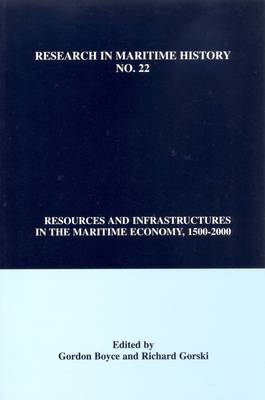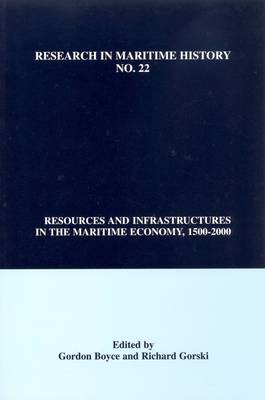
- Afhalen na 1 uur in een winkel met voorraad
- Gratis thuislevering in België vanaf € 30
- Ruim aanbod met 7 miljoen producten
- Afhalen na 1 uur in een winkel met voorraad
- Gratis thuislevering in België vanaf € 30
- Ruim aanbod met 7 miljoen producten
Zoeken
Resources and Infrastructures in the Maritime Economy, 1500-2000
€ 34,95
+ 69 punten
Omschrijving
This book provides a study of both the physical and intangible frameworks that enabled maritime resources to flow and infrastructures to operate. The aim is to demonstrate the complexity and diversity of the legal, social, cultural, and institutional forces at work within maritime economics. Port development, planning, and policy-making constitute the physical frameworks, while agency structures and consular networks make up the non-physical factors under discussion. Both land and sea commodities are examined, including capital mobilised from other sectors, and a particularly pertinent maritime commodity, fish. Through case studies, theory-driven analysis, evidence from statistical data, and regional and national comparisons, it successfully illustrates the structure of resource flow and the shape of maritime economic activity on an international scale spanning the eighteenth, nineteenth, and twentieth centuries. Nations examined include Scotland, England, New Zealand, Italy, Denmark, plus several Nordic and Mediterranean states. The book consists of three sections: the first exploring intangible infrastructures and their components; the second, resource flow and economic development; and, finally, the physical infrastructures of the ports themselves.
Specificaties
Betrokkenen
- Uitgeverij:
Inhoud
- Aantal bladzijden:
- 174
- Taal:
- Engels
- Reeks:
- Reeksnummer:
- nr. 22
Eigenschappen
- Productcode (EAN):
- 9780973007329
- Verschijningsdatum:
- 1/12/2002
- Uitvoering:
- Paperback
- Formaat:
- Trade paperback (VS)
- Afmetingen:
- 157 mm x 236 mm
- Gewicht:
- 331 g

Alleen bij Standaard Boekhandel
+ 69 punten op je klantenkaart van Standaard Boekhandel
Beoordelingen
We publiceren alleen reviews die voldoen aan de voorwaarden voor reviews. Bekijk onze voorwaarden voor reviews.







